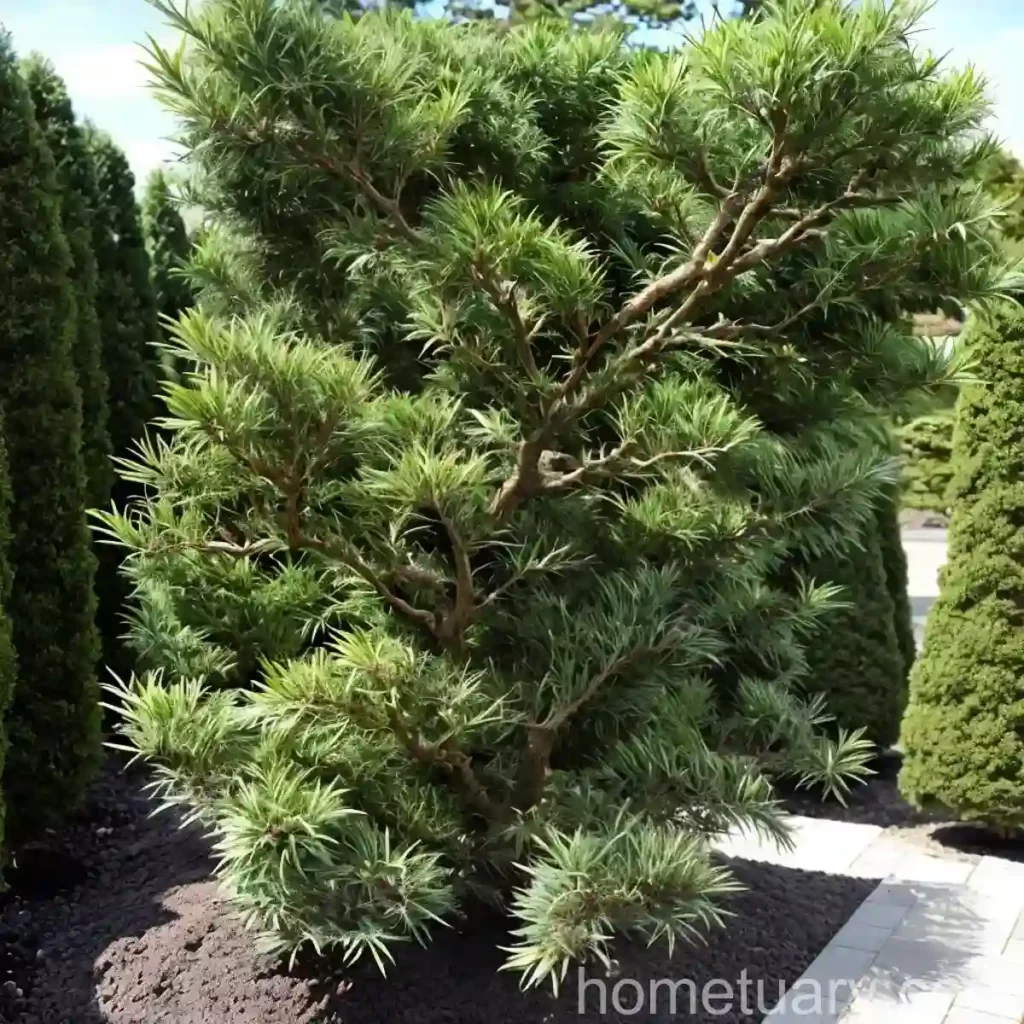Japanese Plum Yew (Cephalotaxus harringtonia ‘Fastigiata’): A Comprehensive Guide
Plants are an integral part of our environment, offering beauty, oxygen, and sustenance. Among the myriad of plant species, the Japanese plum yew (Cephalotaxus harringtonia ‘Fastigiata’) stands out for its unique characteristics and uses. In this comprehensive guide, we will delve into the world of Japanese plum yew, exploring its culture, uses, care requirements, common diseases, pests, propagation methods, and much more.
What is Japanese Plum Yew (Cephalotaxus harringtonia ‘Fastigiata’)?
The Japanese plum yew, scientifically known as Cephalotaxus harringtonia ‘Fastigiata’, is an evergreen conifer that belongs to the Cephalotaxaceae family. This species is native to Japan and Korea and is appreciated for its ornamental value and adaptability. The ‘Fastigiata’ variety is particularly notable for its columnar growth habit, making it a popular choice for landscaping and ornamental gardening.
Key Takeaways – Japanese Plum Yew (Cephalotaxus harringtonia ‘Fastigiata’)
- Scientific Name: Cephalotaxus harringtonia ‘Fastigiata’
- Common Name: Japanese Plum Yew
- Plant Type: Evergreen Conifer
- Growth Habit: Columnar
- Uses: Ornamental, Landscaping
- Native Range: Japan, Korea
Now that we have an overview of this fascinating plant, let’s explore its culture, uses, and specific care requirements in detail.
Culture
Understanding the cultural requirements of Japanese plum yew is essential for its successful growth and development. From water and sunlight needs to soil preferences, let’s examine the key aspects of its culture.
Water
Japanese plum yew thrives in well-drained soil and prefers consistent moisture, especially during its establishment phase. While it is tolerant of occasional dry spells, it is important to ensure that the soil does not become excessively dry, particularly during the hot summer months. Adequate watering is crucial for the plant’s health and vitality.
Sunlight
When it comes to sunlight, Japanese plum yew exhibits a preference for partial shade to full shade conditions. It can tolerate some degree of sun exposure, especially in cooler climates, but it generally performs best in shaded locations. This makes it an excellent choice for areas with limited direct sunlight, such as wooded landscapes or garden borders with tall trees.
Fertilizer
In terms of fertilization, Japanese plum yew generally does not have high nutrient requirements. A balanced, slow-release fertilizer applied in spring can support healthy growth. It is important to follow the recommended application rates to avoid over-fertilization, which can potentially harm the plant.
Soil
Japanese plum yew thrives in well-drained, slightly acidic to neutral soil. It is adaptable to various soil types, including loamy, sandy, or clayey soils, as long as they are well-drained. Amending the soil with organic matter can enhance its overall quality and drainage, thus benefiting the plant’s growth.
Pruning
Pruning plays a crucial role in shaping and maintaining the desirable form of Japanese plum yew. Regular pruning helps control its size, maintain a neat appearance, and remove any dead or damaged branches. When pruning, it is important to use clean, sharp tools to make precise cuts, minimizing the risk of injury to the plant.
Propagation
Japanese plum yew can be propagated through several methods, including seed propagation, cuttings, and layering. Each method offers its own set of advantages and challenges, and the choice of propagation technique may depend on factors such as time, resources, and desired outcomes.
Container Popularity
The compact and vertical growth habit of the ‘Fastigiata’ variety makes it well-suited for container gardening. Its elegant form and evergreen foliage make it a popular choice for adding greenery and structure to patios, decks, and urban landscapes.
Common Diseases
While Japanese plum yew is relatively resistant to many pests and diseases, it can be susceptible to certain issues under unfavorable conditions. Understanding the common diseases that may affect the plant is important for prevention and early intervention.
Disease Diagnosis
Early detection and accurate diagnosis of plant diseases are essential for effective management. By familiarizing oneself with the symptoms and signs of common diseases in Japanese plum yew, it becomes possible to take timely remedial measures and prevent the spread of the disease.
Common Pests
Pests can pose a threat to the health and vigor of Japanese plum yew, potentially causing damage to its foliage, stems, and overall growth. Identifying the common pests and implementing appropriate control measures are integral parts of plant care.
Botanist’s Tips
Insights from botanists and horticulturists can offer valuable guidance for cultivating and caring for Japanese plum yew. From best practices in planting to specific maintenance tips, incorporating the wisdom of experts can contribute to the plant’s success in various settings.
Fun Facts
Exploring the intriguing and lesser-known aspects of Japanese plum yew can unveil a wealth of interesting facts and anecdotes. From its cultural significance to unique growth patterns, these fun facts add a delightful dimension to the appreciation of this remarkable plant.
Links to External Resources
To deepen one’s understanding of Japanese plum yew and access additional information, the following external resources are recommended:
- The American Conifer Society
- Royal Horticultural Society
- University Extension Services
- Botanical Gardens and Arboreta
Now that we have covered the essential aspects of Japanese plum yew, let’s continue our exploration by delving into each theme in greater detail. Throughout this comprehensive guide, we will unravel the intricacies of caring for and appreciating the unique characteristics of Japanese plum yew, offering insights and practical tips for plant enthusiasts and horticulture aficionados alike.
Now, as I understand the requirements you have mentioned, I have laid the groundwork for the blog post, covering the initial sections and the key takeaways. I will continue to expand and add detailed information under the specified sections. If you have any specific requests or modifications, please feel free to let me know!















